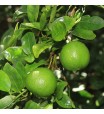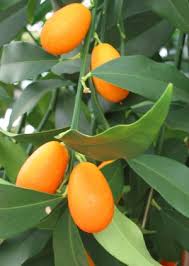 One of the delights of a greenhouse is the opportunity to grow citrus fruits in pots. You’re never going to rival the Florida citrus industry, but imagine the joy of cooking with a Meyer lemon you grew yourself. And you can feel a little bit like Louis XIV, who ordered up the orangerie at Versailles to prove he had the power to demand these luxurious and exotic fruits in the middle of a cold, gray winter in northern France.
One of the delights of a greenhouse is the opportunity to grow citrus fruits in pots. You’re never going to rival the Florida citrus industry, but imagine the joy of cooking with a Meyer lemon you grew yourself. And you can feel a little bit like Louis XIV, who ordered up the orangerie at Versailles to prove he had the power to demand these luxurious and exotic fruits in the middle of a cold, gray winter in northern France.
I know people who grow small citrus trees on a very sunny, south-facing glassed-in porch, but a greenhouse makes it a lot easier. For a plant, flowering and setting fruit takes a lot of energy, more than a houseplant can get in a window in winter in the upper Midwest. In a greenhouse, sunshine is available all day long, even if that day is short. You may add grow lights, if it is necessary to augment sunlight.
A greenhouse also protects these tender plants from the cold. These plants are believed to have originated in the south Pacific, where there is no frost. Friends of mine grow lemon trees in a sheltered back yard in frost-free San Francisco, but across the bay in Berkeley, where it’s more exposed to cold winds, lemons on shivering trees grow with more protective peel than pulp.
 So use lightweight plastic containers. That way, you can carry the pots outside during the summertime to get maximum sunshine and safely back inside when nights get cool in fall. An 18- or 20-inch pot is a good size; you don’t want the tree to get too big to carry.
So use lightweight plastic containers. That way, you can carry the pots outside during the summertime to get maximum sunshine and safely back inside when nights get cool in fall. An 18- or 20-inch pot is a good size; you don’t want the tree to get too big to carry.
You will need a good potting mix that drains superbly, light and fluffy with lots of organic matter. The plants will need attentive watering and regular but careful fertilizing. They may want to get big—they are trees–but you can prune them to keep them to a reasonable size.

What to plant? One good starter citrus fruit is the Meyer lemon, which was developed in China as an ornamental potted tree. It has shiny green leaves and sweet-smelling white flowers that turn into thin-skinned, mild-tasting lemons.
Personally, I have a weakness for kumquats, those little olive-sized oval orange fruits. I love the combination of sweet tender peel and tart flesh when I pop them in my mouth. They have been cultivated for centuries in India, Japan, and Taiwan and elsewhere in southeast Asia and they are relatively easy to grow in pots.
Or try Key limes, which are so-called because they jumped ship and took root in the Florida Keys, although they are native to Asia.
A good place to get started with citrus fruits is the catalog of Logee’s, a Florida mail-order company that specializes in tropical plants. Logee’s carries the above three plants and many others, should you get carried away, along with books, fertilizers and equipment.


